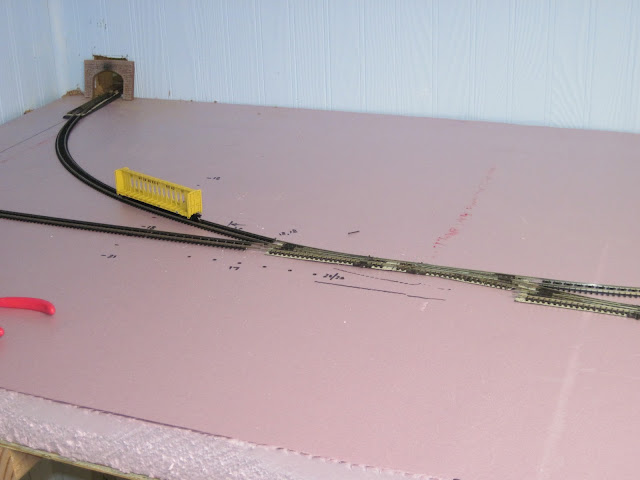Model railroads can serve many functions. In my case, one car on the layout commemorates a piece of my family's history from nearly a century ago.
My maternal grandmother's brother, my great uncle, was named Guy Roberts. As a young man, his family-- including my grandmother, a baby at the time-- was living in Wapanucka, Oklahoma. One Halloween night when he was in his teens, my Uncle Guy and a friend decided to "trick" the town. They collected every outhouse in Wapanucka and loaded them onto a dilapidated flatcar that had been sitting in a nearby siding for months. In the morning, the town would awaken to find their privies gone. Once they found the outhouses on the flatcar, everyone would have a good laugh.
Or so my uncle and his friend had planned. Unfortunately, during the night a local freight stopped and picked up the flatcar and by morning it was long gone. When the young men's mischief was revealed, my uncle feared that they might be beaten by townsfolk who were none too pleased by their prank and the subsequent loss of the towns "necessaries." Yet in the end the boys escaped violence. According to my uncle, in the midst of the angry and growing crowd, someone began to laugh. When asked why, the man suggested that they consider the ridiculous sight of a flatcar loaded with outhouses headed south across Texas. Soon others began to laugh and the mood lightened. The boys agreed to replace the lost privies and the matter was closed.
I had my friend George paint up a variety of N scale outhouses and filled a flatcar. Here is the result:
I wish I knew more about the incident. Even the exact date of the event is unclear. My uncle was born in 1903, and at the time this occurred he was no longer a boy who would have been spanked, but rather a teenager who might have been more severely roughed up by the crowd. My grandmother (I called her BaBa) was born in 1916 and was too young to remember it, and they moved away from Wapanucka in 1923. This seems to place the incident somewhere between 1918 (when Uncle Guy was 15) and 1922 (when my grandmother would have been 6 and probably old enough to be aware of this happening).
There's only one thing I can add and it amounts to pure speculation. Why had the flatcar been sitting in the siding for so long? Flatcars sitting empty on a siding don't earn revenue-- in fact, they actually cost the railroad money if the car belongs to another railroad, in which case the railroad the car was sitting on would owe the railroad that owned the car demurrage charges. History might offer a clue. US railroads responded very poorly to the demands of World War I and many nearly came to a standstill well into 1919. The situation was so bad that the federal government toyed with the idea of reorganizing the nation's railroad network into a more rational system in the so-called Plumb Plan. So maybe this event occurred in 1919 and showed that the railroad was finally starting to move again and get cars back into revenue service.
At that time, two railroads ran through Wapanucka, the Rock Island and the Kansas, Oklahoma, & Gulf (KO&G). I'm not sure which railroad was the one in the story. Because my great-grandmother later lived in Atoka, Oklahoma, on the mainline of the Missouri, Kansas, & Texas (MKT), I decided to use an MKT flatcar. I like to imagine that the Rock Island (or OK&G) was paying demurrage to the MKT for a flatcar hauling outhouses!
Both railroads through Wapanucka are gone today, as are Uncle Guy and BaBa. The town itself is just a shell of what it was when my grandmother was a child. BaBa and I visited there in 2006 when she turned 90. She lived with me in 2007-2008 until she passed away at the age of 92. Below are pictures from our 2006 trip:
Looking east down the old Rock Island mainline through Wapanucka. The KO&G ran parallel through town, so the flatcar stood near here over 90 years ago.
One of the few clues a railroad ever passed through Wapanucka. Sadly, there is even less left of the KO&G.
"The past is never dead. It's not even past." --William Faulkner
In loving memory of BaBa and Uncle Guy.

































